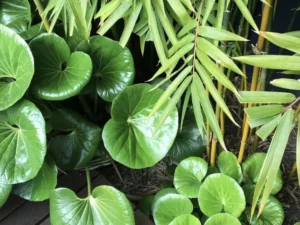Peace lilies (Spathiphyllum) are popular for their beauty and air-cleaning ability. This makes them common in homes and workplaces. Yet like any other plant, they have their own issues. These plants are praised for their beauty and easy care. But, you must know the peace lily’s downsides before bringing one into your space. This post Knowing” Peace Lily Disadvantages” will discuss the possible downsides of having a peace lily thereby allowing you make an informed choice.
Peace Lily Drawbacks: Worries about Poisoning
Toxicity concerns are one of the main peace lily drawbacks. The leaves contain calcium oxalate crystals which can be harmful if chewed or swallowed by humans or animals. That should be a serious consideration for families that have inquisitive pets or young children.
Toxicity in pets
It is the case that cats and dogs can be exceptionally susceptible to the poisonous effects of peace lilies. If a pet swallows or chews any part of the plant, it may drool, vomit, find it hard to swallow and in severe situations, have problems with breathing. Although peace lily poisoning is rarely fatal, it can be very uncomfortable and may require medical intervention.
Toxicity in humans
As for humans especially children at a young age; peace lilies can also be dangerous. Ingestion of bits of this plant will cause oral irritation as well as swelling of lips, mouth and tongue together with nausea and vomiting. When the sap contacts the skin, some slight irritation or allergic reactions are possible. Families with small kids should always stay alert when they have Peace Lily indoors.

Disadvantages of Peace Lilies: Maintenance Needs
Peace Lilies are often called “easy-to-maintain.” But, some care directions may not appeal to some gardeners.
Photo-sensitive
Peace lilies like indirect light, and they can be hurt by too much direct sunlight. But you know that if peace lily leaves are exposed to direct sun, they will obviously burn, hence turning yellow or brown in color. However, insufficient light leads to bad growth and lack of flowering. It’s hard to meet a peace lily’s lighting needs in low-light homes. It is vital for its health.
Watering Demands
Another disadvantage of peace lilies is that they always need watering on a regular basis. Peace lilies do well in constantly moist soil but tend to get root rot when overwatered. Striking a balance between keeping the soil wet without water logged roots could be hard particularly for amateur plant parents. Also, tap water with high chlorine or fluorine levels causes peace lily leaves to brown. Therefore, filtered or distilled water may be needed for their care.
Humidity Desires
This as well calls for high humidity levels that can be difficult to maintain in dry indoor environments. The leaf tips will turn brown due to low humidity and the plant deteriorates in general. This may mean you have to buy a humidifier or frequently mist the plant, two things that may sound a little inconvenient.
Cons of Peace Lily: Pest and Disease Problems
It is also worth noting that like other houseplants peace lilies are prone to some diseases and pests which can act as another disadvantage.
Pests
Pests such as spider mites, aphids, and mealybugs may infest peace lilies. These insects suck sap from the leaves causing them to change color, wilt and grow slowly. It requires regular checks and quick treatments to keep pests down. This increases its maintenance demands.
Proneness to Infections
Overwatering is a common cause of root rot, one of the diseases that peace lilies are vulnerable to. Root rot has no typical symptoms until it is advanced. It causes stunted growth and yellowing leaves, which may be mistaken for other problems. Therefore, when root rot begins in a plant, it becomes difficult to rescue, emphasizing the need for correct watering methods.
Allergic Reactions to Peace Lilies
Allergens are also another disadvantage of peace lilies. Some people may be allergic to these flowers’ pollen. They may sneeze, have a runny nose, and itchy eyes. This is particularly relevant in homes with individuals who suffer from respiratory diseases such as asthma or hay fever.
Short-lived Blooms for Peace Lily
One attraction of peace lilies is their beautiful white flowers that last for many months. Another problem is that its blossoms have a short life span, which show up once or twice each year. Some owners may find the plant less attractive without its signature flowers because the flowers do not open all the time. Also, getting a peace lily to re-bloom can be tough. It needs perfect light, watering, and feeding.

Conclusion:
Despite their beauty and many benefits, peace lilies have drawbacks. These should be considered before acquiring them for a home. A few examples of factors that can affect your decision include their toxicity to humans and pets, specific care required by the plant, susceptibility to pests and diseases, potential allergic effects and the short lives of their blooms.
If you can care for a peace rose and protect your family and pets from it, it could be a great addition to your indoor plant collection. However, if these downsides appear too daunting for you, it may be wise to look at other houseplants which will better fit into your lifestyle and dwelling space.


















